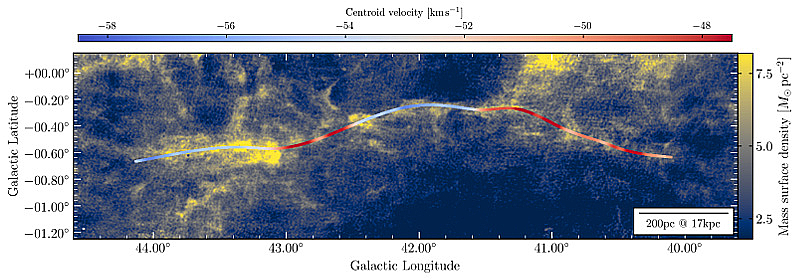| EPoS Contribution |
|
The "Maggie" filament: Physical properties of a giant atomic cloud
Jonas Syed MPIA, Heidelberg, DE | |
| The atomic phase of the interstellar medium plays a key role in the formation process of molecular clouds. Due to the line-of-sight confusion in the Galactic plane that is associated with its ubiquity, atomic hydrogen emission has been challenging to study. Employing the high-angular resolution data from the THOR survey, we identify one of the largest, coherent, mostly atomic HI filaments in the Milky Way at the line-of-sight velocities around -54 km/s. The giant atomic filament "Maggie", with a total length of 1.2 kpc, is not detected in most other tracers, and does not show signs of active star formation. At a kinematic distance of 17 kpc, Maggie is situated below (by 500 pc) but parallel to the Galactic HI disk and is trailing the predicted location of the Outer Arm by 5-10 km/s in longitude-velocity space. The centroid velocity exhibits a smooth gradient of less than ±3 km/s /10 pc and a coherent structure to within ±6 km/s. After correcting for optical depth effects, the mass of Maggie's dense spine is estimated to be 7.2×105 solar masses. While Maggie's origin remains unclear, we hypothesize that Maggie could be the first in a class of atomic clouds that are the precursors of giant molecular filaments. | |
 | |
| Caption: Mass surface density map of Maggie. The spine of Maggie is color-coded by the average centroid velocity along the filament. | |
| Collaborators: J. D. Soler, INAF, IT H. Beuther, MPIA, DE S. Suri, U Vienna, AT |
Key publication
Suggested Session: Filaments |

